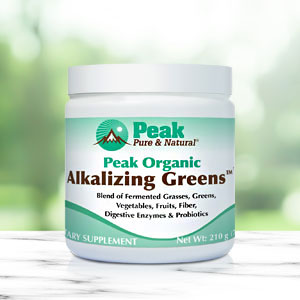Get Easy Health Digest™ in your inbox and don’t miss a thing when you subscribe today. Plus, get the free bonus report, Mother Nature’s Tips, Tricks and Remedies for Cholesterol, Blood Pressure & Blood Sugar as my way of saying welcome to the community!
The fiber that could stave off liver damage

High fructose corn syrup (HFCS) is one of the unhealthiest foods on the planet. It’s been linked with obesity and all kinds of cardiometabolic diseases, not to mention colorectal cancer and brain disorders like Parkinson’s disease and Alzheimer’s disease.
The reason it’s still on the market is that the powerful corn lobby has worked overtime to keep it on our grocery store shelves. And when I say it’s on the shelves, I mean it’s in way more than soda and other sweet treats.
HFCS and its cousin, simple fructose, can be found in everything from ketchup to soup to frozen dinners. That makes it really tough to avoid, especially as life gets busy and it becomes all too easy to reach for convenience foods.
But there may be a way to stave off the damage caused by simple fructose and HFCS in a specific area of the body — and it could be as simple as having a steaming bowl of oatmeal…
The liver-protecting power of inulin
One of the cardiometabolic diseases connected with HFCS consumption is metabolic dysfunction-associated steatotic liver disease (MASLD), more commonly known as fatty liver. Despite its nickname, MASLD can strike people who are not overweight, making it difficult to diagnose.
If left unchecked, MASLD can lead to the more serious metabolic dysfunction-associated steatohepatitis (MASH) — formerly known as NASH — cirrhosis and liver cancer.
One of the scariest things about MASLD is that it has no symptoms, so we often don’t know we have it until it has progressed to a more dangerous stage. But new findings from a study at the University of California Irvine (UC Irvine) show that a simple diet change may help prevent and even reverse MASLD.
Using mice with dietary fructose-induced liver disease, researchers examined the impact of a specific dietary fiber, inulin, on fructose levels in the small intestine.
The results confirmed that this simple dietary change could prevent fructose-induced fatty liver disease and insulin resistance.
“We found that consuming a type of dietary fiber called inulin, abundant in vegetables, changes the bacteria in the gut to promote the consumption of harmful dietary fructose,” says Cholsoon Jang, PhD, an assistant professor of biological chemistry who leads the Nutrient Metabolism & Disease Lab in the School of Medicine.
“This leads to less fructose spillover to the liver, preventing fructose-induced fatty liver disease and insulin resistance. Inulin also helps the liver make more of its antioxidant to prevent inflammation.”
Dr. Jang is referring to glutathione, produced in the liver, and considered the body’s master antioxidant.
Sources of inulin
The researchers say these findings could lead to preventive medicine based on dietary choices that promote healthy gut bacteria. In future studies, they plan to evaluate the effects of other abundant dietary fibers on fructose-induced diseases, such as diabetes, obesity, fatty liver disease and cancer.
“By identifying specific gut bacteria and metabolic pathways involved, our findings can guide personalized nutrition strategies,” Jang says. “For example, by checking how well someone’s gut bacteria clears fructose before the body absorbs it, we can choose the right prebiotic or probiotic supplement for that person to improve results and reduce side effects.”
Until then, why not add some inulin to your diet? It’s considered a prebiotic, meaning that it feeds the friendly bacteria in your gut microbiome, so it’s a great way to keep your gut healthy.
As noted earlier, inulin is abundant in vegetables, particularly asparagus, leeks, garlic, onions, unripe bananas, soybeans and Jerusalem artichokes.
It can also be found in certain grains like oats. Eating a bowl of oatmeal a day is a great way to boost your intake of both inulin and beta-glucan, a fiber that, like inulin, has been shown to help suppress appetite, lower blood sugar and promote healthy weight.
Editor’s note: There are perfectly safe and natural ways to decrease your risk of blood clots including the 25-cent vitamin, the nutrient that acts as a natural blood thinner and the powerful herb that helps clear plaque. To discover these and other secrets of long-lived hearts, click here for Hushed Up Natural Heart Cures and Common Misconceptions of Popular Heart Treatments!
Sources:
Understanding How Fiber Improves Metabolic Health — UC Irvine School of Medicine
Dietary fibre-adapted gut microbiome clears dietary fructose and reverses hepatic steatosis — Nature Metabolism
What Makes High Fructose Corn Syrup So Bad? — Hartford Hospital
Sugarcoating the Truth: The Role of Lobbying in America’s Obesity Epidemic — Columbia Political Review














